'The animal comes first': Wildlife photographers urge fellow hobbyists to moderate 'hunt' for rare creatures
SINGAPORE — When full-time national serviceman Hamad Azam’s phone buzzed on a Sunday night with a message that read “JASPER” in all capital letters, the 21-year-old sprung out of his bed excitedly, grabbed his gear and dashed out of his home.
An hour or so later, he found himself with several others on a trail in the forested area of Mandai in the wee hours of Jan 7, raring for action despite a lack of sleep.
"Jasper" is not some National Service codeword flashing on a television screen, which signifies an ongoing mobilisation exercise for servicemen.
Instead, it refers to the rare and elusive Jasper cat snake, which was spotted by a member of Mr Hamad’s “herping” chat group who alerted the rest of his sighting along a Mandai trail.
This was the reason why Mr Hamad and four other members of the herping community were in Mandai: To catch a rare glimpse of the greyish-brown snake speckled with black and pink with their cameras.
Herping refers to finding and observing reptiles and amphibians in their natural habitats. This often involves hiking, exploring and carefully observing different habitats to see these creatures to photograph them.
Mr Hamad, who also goes by his Instagram handle "Tobi", said that it was a double delight because the group recently spotted another rare snake — a banded krait.
“We were ecstatic mainly because the Jasper cat snake was an extremely unexpected, rare sighting, and this came seven days into the new year," the herping enthusiast said.
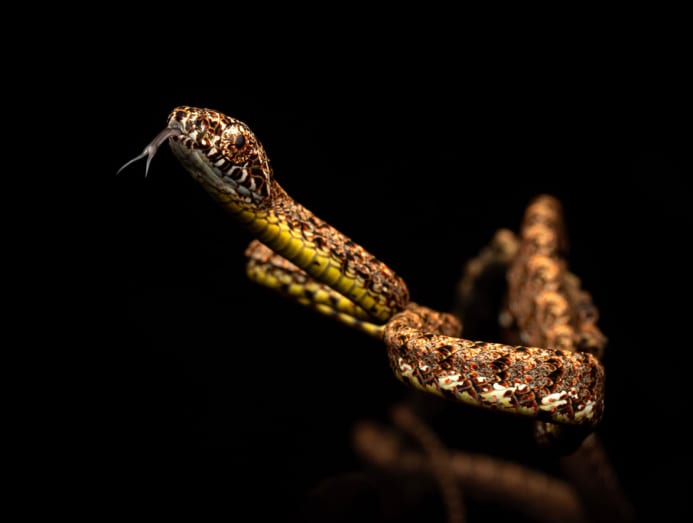
Another avid shutterbug, Mr Terence Szeto, 32, said that interest in the wildlife photography hobby swelled during the Covid-19 pandemic when overseas travel was forbidden, though he said that their numbers probably declined after borders reopened.
Still, that did not stop hundreds of passionate photographers and curious onlookers from gathering near a large tree in Telok Blangah in early May, after a pair of baby Sunda owls were seen nested there.
The incident sparked ethical concerns about the role that these wildlife photographers play in an urban setting such as Singapore, with some people voicing their fears that such congregations risked affecting the young birds.
Responding to these concerns, the wildlife photographers who spoke to TODAY urged their fellow shutterbugs not to take part in these large crowds around wild animals or stay for extended periods of time in order to avoid harming them.
Mr Szeto said that he would rather avoid such crowds because of the added bonus of being able to enjoy the tranquillity that nature offers. He mainly photographs wildlife by himself or with his wife.
Co-founder of Hatched Productions, a commercial video production company, he added: “The fun in the photography process is trying to find the animals by yourself, and I also prefer the quiet of nature.”
Mr Hamad’s group believes in non-interference with nature as well. His posse of four photographers keep to official trails, since it is illegal to venture off marked paths.
Anyone caught straying off designated trails in nature reserves can be fined up to S$2,000.
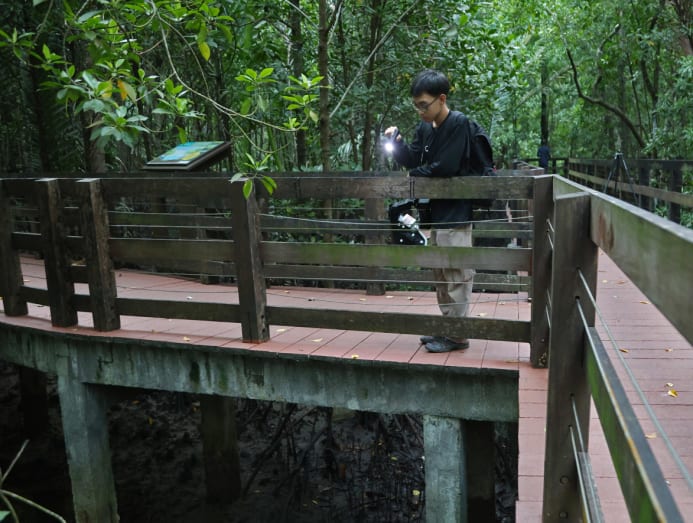
Mr Hamad, who specialises in photographing snakes and has been doing so for nearly three years, said that rushing out to spot rare creatures is especially memorable when they are the only humans there.
At the end of the day, their photography hobby serves a bigger purpose of spreading awareness about the wild ecosystem here and should never be just about the photos alone.
“I started wildlife photography to share with Singaporeans that we have all these amazing animals,” the youth said. “I want to eliminate the misconception and the fear that snakes are out to get you... in reality, they are not.”
INSPIRED BY NATURE DOCUMENTARIES
Both Mr Hamad and Mr Szeto said that their interests in animals came from watching nature documentaries from an early age.
Mr Szeto said: “I grew up watching nature documentaries, like National Geographic, BBC Earth and all that, and that got me interested in animals.”
That allowed him to combine his love for animals with his field of study, which was filmmaking at university.
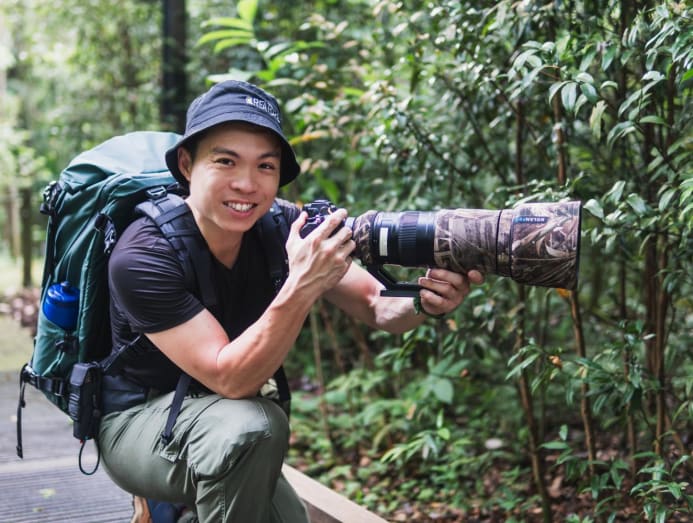
At first, Mr Szeto was drawn to primates such as orangutans and other “big, charismatic animals” that could only be found overseas, including tigers in India and rhinos in Nepal. During the pandemic lockdown, when he could not travel to these locations, he started to focus on wildlife in Singapore.
“I didn’t know that there were so many species locally. If you put the charismatic giant animals aside, you will find that Singapore has many very interesting species to offer.”
Like other budding wildlife photographers, Mr Szeto was amazed at the biodiversity that a tiny island such as Singapore has to offer — from more than 400 species of birds to being home to rare animals such as the culogo (a small mammal resembling a flying squirrel with webbed feet that glides), the mouse deer and the pangolin.
As for Mr Hamad, who also found himself drawn to animals through nature documentaries, it was the Instagram page of well-known nature photographer Jayaprakash Bojan here that made him take the plunge.
“I got inspired, so I took my sister’s camera (an old Nikon digital SLR) and went to Pasir Ris Park for fun,” Mr Hamad said, adding that he was hooked after spotting his first snake, a mangrove pit viper, there.
“I couldn’t believe it because, wow, a viper in urban Singapore.”
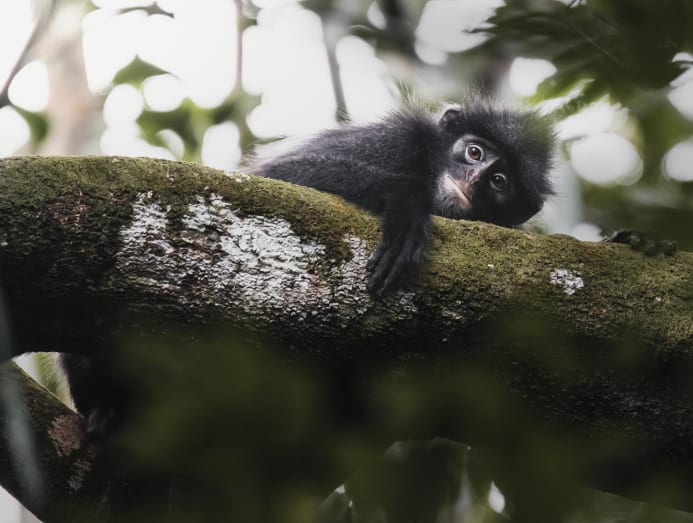
Miss Zoee Lim, 22, an ecologist who first came up close with animals following a volunteering stint at the Animal Concerns Research and Education Society (Acres) from 2017 to 2022, said that she got into the hobby after that.
In addition to her work as a fauna specialist for biodiversity consultancy, Miss Lim does guided walks, wildlife photography and raise caterpillars.
She photographs a variety of insects and reptiles, and said that these macro images of spiders, millipedes and butterflies help people see “beauty in the small stuff”.
“I like to give a voice to the voiceless,” Miss Lim said, having been in the wildlife scene for seven years. “My goal is to capture the beauty of creatures that people would not even glance at and show that they, too, have their own intrinsic value.”
Her motivation for photographing insects is in the hope that people can slow down to appreciate nature.
“I want to sort of be the bridge between humans and wildlife to help humans appreciate and understand nature more,” she said. “Hopefully, this might inspire some people to want to protect them even more.”
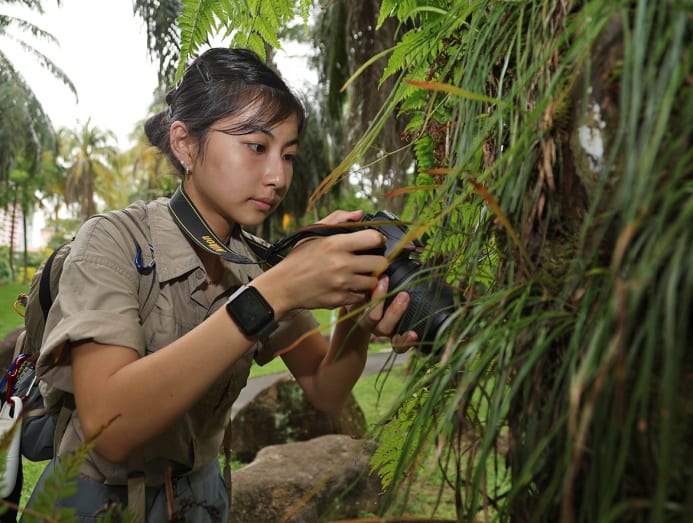
THE SNAKE PIT OF WILDLIFE PHOTOGRAPHY
The photographers interviewed by TODAY said that most people do not realise how physically demanding wildlife photography can be, because it involves walking or hiking long distances, lying in wait for subjects to appear, and carrying heavy camera equipment.
After all, when it comes to wildlife photography, shutterbugs may not always get their payoff since their subjects can come and go as they please.
When Mr Hamad began taking photos of wildlife, he started with birds and found out that patience was a key aspect of the hobby.
“There is a lot of walking and a lot of waiting. I think the longest I’ve waited for a bird to show was about four hours.”
For snakes, the difficulty level ramps up more since these creatures are better at hiding from humans, Mr Hamad added. Outings can begin at 9pm and last until 5am. More often than not, these trips also end in vain.
However, he said that insects are the hardest to photograph, given their size and closeness needed to shoot them, especially with a macro lens. For a higher chance of success with insects, doing some research about their habitat and having some in-field experiences will help.
“(Photographing insects) is the hardest because even if you do get to spot a spider, then comes getting the proper angles of it, and they can scurry off anytime,” Mr Hamad said.
Then, there is the constant frustration of not getting the shot, which can leave some young photographers disheartened.
“I’d say that for most people, there will be other outings where you will go out and you will not get a single image at all, or a single usable image,” Mr Szeto said, adding that this may scare away budding photographers.
“But I think it’s very rewarding when all the stars align.”
For him, it took several months before he spotted the Raffles’ banded langur, which is a type of monkey with its distinctive black fur and white bands on its chest and inner legs.
Mr Szeto said that since the langur prefers to be high up in trees, it can be challenging to get a good angle of them.
“I think it took maybe a year to finally get that particular shot that I wanted.”
Besides relying on chance and an individual's skills, wildlife photography can also be an exercise in teamwork, because it often depends on a community of like-minded spotters to track down rare creatures in the wild.
Although the wildlife photography community here is generally friendly and welcoming to young photographers, with so many people vying for that one shot, some friction is bound to happen, those interviewed told TODAY.
Mr Szeto said that he has seen squabbles among fellow shutterbugs who try to "gate-keep" certain locations where they found sightings of rare creatures, though such conflicts happen infrequently.
Agreeing, Miss Lim said: “It has moments where it can get overly competitive.
“If your luck happens to be better than others, (other photographers) will be very competitive in sharing locations (of animal sightings) with you.”
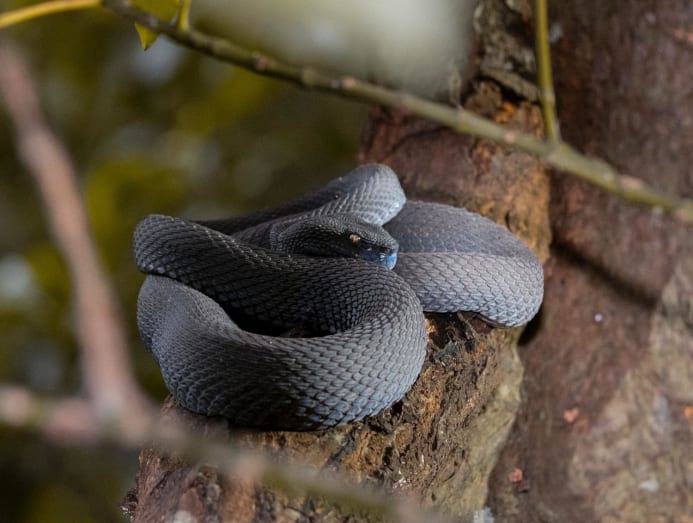
THE ‘HIGH’ OF GETTING THE PERFECT PHOTO
Despite the challenges, Miss Lim said that the hobby is a rewarding one. She recalled how she managed to photograph a shore pit viper nicknamed “Blu” in Pasir Ris Park in June 2022.
Blu was so named because shore pit vipers in Singapore are primarily purplish brown, but the one that she saw had a brilliant blue colouring on its head.
To add to the allure, Blu is known to only make a public appearance once a year or every few years, making sightings of it extremely rare, she said.
When a friend tipped Miss Lim off that Blu was found, she was in the middle of entering data from a field study. She dropped everything she was doing and went down to catch a glimpse of the snake as soon as she got the message.
“The distance it was at was perfect. The shot was beautifully framed, and it wasn’t moving,” Miss Lim said of the photograph she took of Blu.
The photographers admitted that the euphoria of getting the perfect shot can sometimes lead people into a frenzy.
Mr Hamad said that he has witnessed photographers prioritising their photographs over the welfare of the wildlife.
"I can tell they are about getting the shot. They don’t really care about the welfare of the animal, or (are not there) to admire them.”
In the end, ethics and the welfare of the animal can sometimes take second place.
In the case of the Sunda owls, many nature groups voiced their concerns over the crowds gathered around the nest. The Singapore Bird Society said in a statement on its website: “Nesting birds are sensitive. When they sense that the site they selected is untenable, abandonment can happen.”
On May 10, Acres said on Facebook that photographers and members of the public should minimise crowding in the area when the owlets were learning to fly.
“This is a critical stage, and we sincerely appeal to photographers and the public to not surround the area.
"Presence of many people around fledged owlets can prevent the parents from giving the much-needed guidance,” the animal welfare organisation added.
NO NEED TO OBSESS OVER THE 'POKEDEX'
For Mr Hamad, he said that there were times when he was caught up in getting the shot and filling up his "Pokedex" with rare animals.
A Pokedex — the term originating from the Pokemon game franchise — is used to describe a comprehensive collection or database of related items or knowledge.
“I found myself no longer doing this as a hobby, and I was chasing after these birds. I found it quite unhealthy, so I took a break,” Mr Hamad added.
An unhealthy obsession beyond the point of rationality can explain why some photographers end up crossing the line. Ultimately, they have to ensure that the welfare of the animal must be at the forefront of their hobby.
“I definitely try to place the animal’s welfare above my own photography needs,” Mr Szeto said.
Noting that some photographers would clap or make loud noises to get the animals to look at the camera, he said that such acts go against what nature photographers stand for in their work.
"While I (may not) have such a high chance of getting great images to take home, at least I won’t feel guilty, because I don’t do any of those (actions),” Mr Szeto added.
Miss Lim agreed, saying: “Yes, you might desperately want the perfect shot, but what are you willing to give up in exchange for that?
“The animal should come first. Your photographs should not be the priority.”








